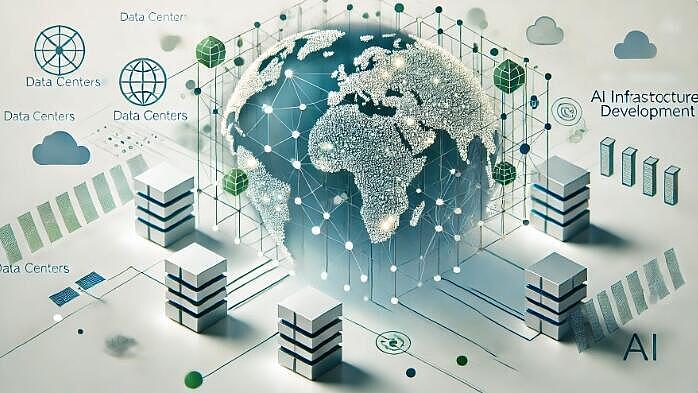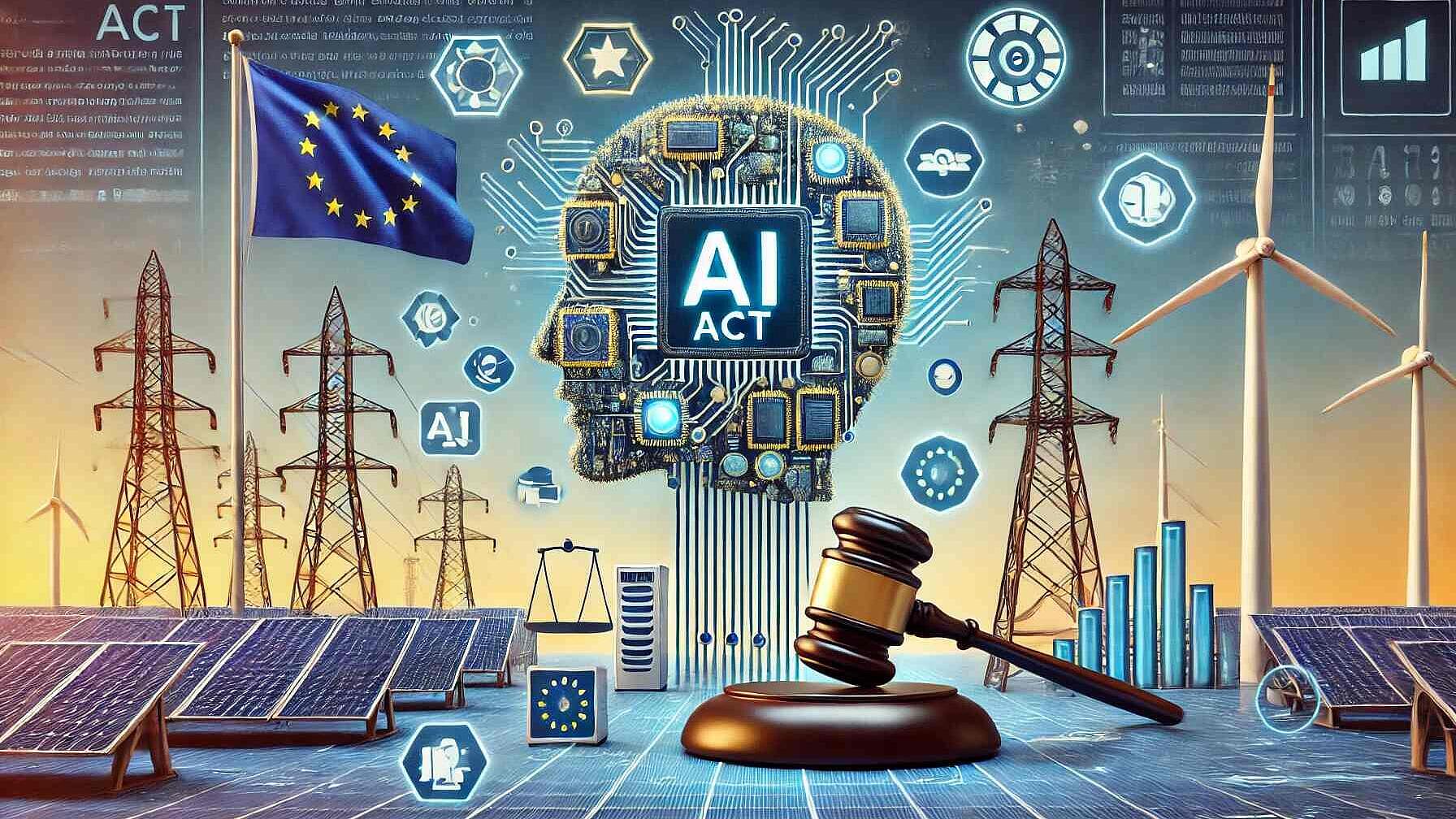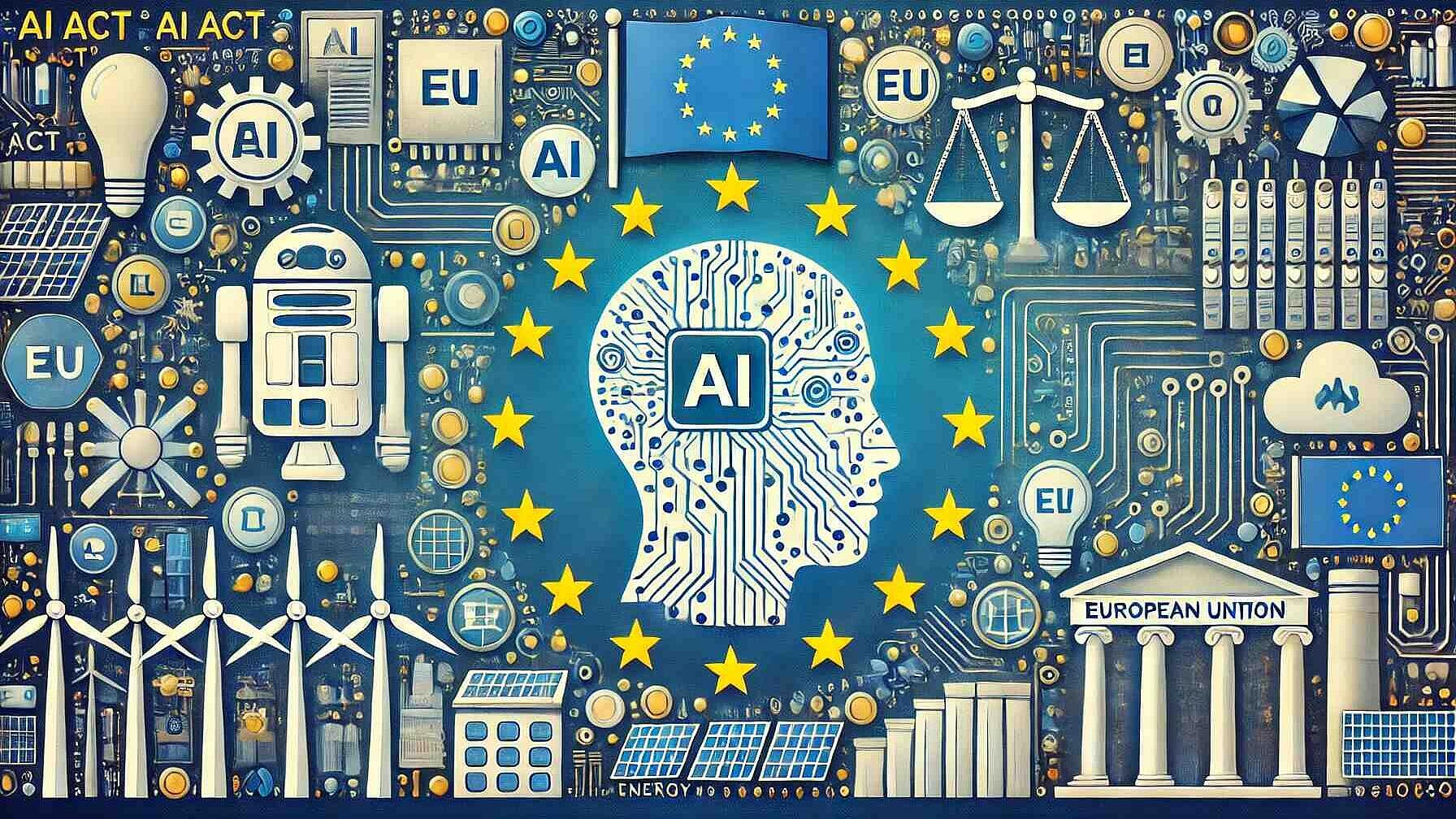 Digitalização
DigitalizaçãoPráticas Comerciais
The Strategic Landscape of AI Infrastructure Financing: Microsoft, BlackRock, and Global Initiatives
Resumo
The article discusses the escalating demand for artificial intelligence (AI) infrastructure driven by the technology's rapidly growing applications across industries. This surge in demand manifests in the increased need for massive computing resources and energy, prompting significant investments in building supportive infrastructures. The Global AI Infrastructure Investment Partnership (GAIIP) stands out, comprising a collaboration between Microsoft, BlackRock, Global Infrastructure Partners (GIP), MGX, and Nvidia to invest up to $30 billion in AI data centers, with the potential to expand to $100 billion through additional debt financing. This initiative aims to scale AI infrastructure primarily in the United States with provisions for global expansion.
Other initiatives include Google's $75 million AI Opportunity Fund intended to improve AI infrastructure and India's $1.3 billion IndiaAI Mission aimed at developing AI capabilities with over 10,000 GPUs and support for AI startups. The European Union is also investing in AI infrastructure through the European AI Alliance, focusing on building infrastructures that comply with ethical and privacy standards.
The challenge of ensuring environmental sustainability is significant given the large energy consumption of AI technologies. Initiatives, therefore, are incorporating investments in renewable energy sources. Emphasizing the beyond-single-entity scale of energy needs, industry leaders advocate for public-private collaborations to address both financial and environmental aspects of building AI infrastructure.
Lastly, the article highlights the importance of global cooperation in building AI infrastructure, noting that robust infrastructure is key to supporting AI technology advancements and upholding environmental responsibility. Countries with strong AI infrastructure are likely to become leaders in the next phase of technological development, but this also raises questions of national security and economic competitiveness in the global landscape.
Artigo aberto completo
The Strategic Landscape of AI Infrastructure Financing: Microsoft, BlackRock, and Global Initiatives
The demand for artificial intelligence (AI) infrastructure is accelerating as AI technologies transform industries globally. However, the massive computing and energy requirements that come with AI present both opportunities and challenges. To address this, key players in finance and technology are joining forces to fund AI infrastructure development on a global scale. Among the most significant of these efforts is the Global AI Infrastructure Investment Partnership (GAIIP), a $30 billion initiative launched by Microsoft, BlackRock, and partners such as Global Infrastructure Partners (GIP) and MGX. But GAIIP is just one of many initiatives aimed at building the infrastructure necessary to support the future of AI.
The Growing Need for AI Infrastructure: AI models, particularly those used in natural language processing, autonomous driving, and advanced data analysis, require enormous computing resources. As models grow in complexity, the demand for data centers to host and process data has surged. According to estimates, data center power demand is expected to rise by 160% by 2030, driven largely by the exponential growth in AI computing needs. AI operations such as training and running large language models like ChatGPT can require up to ten times more energy than traditional computing tasks, adding further strain on infrastructure and energy systems. The expansion of data centers is critical, as these facilities serve as the backbone for hosting AI technologies. Larry Fink, CEO of BlackRock, stressed that the need for data centers will only grow, making them essential to the functioning of the digital economy.Yet the development of this infrastructure goes beyond just adding servers; it also involves significant energy resources, often in the form of renewable energy, to power these systems in a sustainable manner.
The Global AI Infrastructure Investment Partnership (GAIIP): Announced in September 2024, the GAIIP aims to address these challenges by providing up to $30 billion in private equity funding, with the potential to reach $100 billion when including debt financing. The partnership, which includes major global players like Microsoft, BlackRock, GIP, and MGX, seeks to accelerate the development of AI data centers and the necessary energy infrastructure to power them. Nvidia, a leader in AI hardware, is also involved in the initiative, bringing its expertise in AI chips and computing platforms to the project. The GAIIP will primarily focus on building infrastructure in the United States, but it is open to investments in partner countries as well. Satya Nadella, CEO of Microsoft, emphasized that the initiative is part of a broader strategy to scale AI infrastructure globally, ensuring that industries have access to the computing power they need to innovate and grow.
Other AI Infrastructure Financing Initiatives: GAIIP is one of many efforts aimed at addressing the infrastructure needs of the AI revolution. Google has also made significant investments in this area. In April 2024, Google announced a $75 million AI Opportunity Fund and a set of initiatives designed to expand its AI infrastructure. This includes investments in data centers and upskilling programs for AI professionals. Google’s approach emphasizes not only the infrastructure but also the development of the human capital needed to sustain AI innovation in the long term.
India, too, has recognized the importance of building its own AI infrastructure. The IndiaAI Mission, approved in 2024, is a comprehensive national effort to develop the country's AI capabilities. With a budget of over $1.3 billion, the mission aims to build AI compute infrastructure comprising more than 10,000 GPUs, along with public-private partnerships to support AI startups. This initiative also includes the creation of an AI marketplace and indigenous AI models to drive innovation across various sectors of the economy.
The European Union has similarly moved to boost its AI infrastructure through programs like the European AI Alliance. This initiative focuses on building the necessary infrastructure and regulatory frameworks to support AI development across member states, while also ensuring compliance with ethical and privacy standards.
Sustainability and Energy Challenges: One of the biggest challenges facing AI infrastructure development is its environmental impact. AI models, especially those that require large-scale data processing, consume vast amounts of energy. The sheer scale of energy consumption has prompted companies to focus on sustainability in their infrastructure development plans. For instance, GAIIP’s approach includes investments in renewable energy projects to power its data centers sustainably.
Google, too, has focused heavily on the sustainability aspect. In its 2024 infrastructure investments, the company highlighted the importance of transitioning its data centers to renewable energy sources to ensure that AI growth does not come at the expense of environmental sustainability. Likewise, initiatives such as the IndiaAI Mission are exploring ways to build energy-efficient infrastructure that supports both AI growth and broader sustainability goals. Brad Smith, Microsoft’s Vice Chair, noted that the energy needs for AI infrastructure are beyond what any single company or government can handle. This sentiment has been echoed by other industry leaders who recognize the need for public-private partnerships to address both the financial and environmental aspects of building AI infrastructure.
Global Cooperation and Competitiveness: While individual countries and companies are investing heavily in AI infrastructure, the global nature of AI means that international cooperation will be critical for long-term success. Initiatives like GAIIP and IndiaAI are designed to encourage collaboration across borders, ensuring that AI infrastructure is not just a national priority but a global one.
By leveraging both public and private capital, these initiatives aim to build infrastructure that will support AI innovations for decades to come. Moreover, as AI becomes a cornerstone of global economies, nations with strong AI infrastructures are likely to emerge as leaders in the next phase of technological development.
However, this also raises questions about competition between countries. As AI infrastructure becomes a strategic asset, governments may increasingly view it as a matter of national security and economic competitiveness. The race to build AI infrastructure could lead to greater investments from national governments, similar to the global competition seen in other technology sectors like 5G.
Conclusion: As AI technology becomes more integral to various sectors, the development of robust infrastructure to support it is crucial. Initiatives like GAIIP, Google’s AI Opportunity Fund, and IndiaAI reflect the growing recognition of the importance of AI infrastructure financing. These efforts, however, face challenges related to energy consumption, sustainability, and the sheer scale of the investments required. International cooperation and public-private partnerships will be essential to meeting these challenges and ensuring that AI infrastructure is built in a way that supports both technological innovation and environmental responsibility. The future of AI depends not only on advancing the technology itself but also on creating the infrastructure needed to support it.
Sources
news.crunchbase.com/ai/data-center-infrastructure-partnership-msft-blk-nvda/
blog.google/inside-google/infrastructure/google-data-centers-ai-skills-investments/
pib.gov.in/PressReleaseIframePage.aspx


